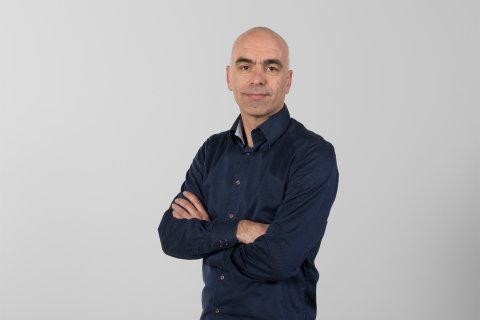Flexible DNA adjusts after youth trauma
Marks a difficult childhood leaves in DNA are helpful, not harmful
Together with researchers from the field of Social and Behavioural Sciences, psychiatrist Marco Boks started a successful collaboration which led to a publication in March 2016. The corresponding press statement was entitled Difficult childhood leaves a mark in DNA. ‘But time is catching up on us’, Boks says 18 months later. ‘We now know that those traces can actually be helpful.’

We go back to the year 2016 and the reason for the research study. Exposure to stress during early youth increases the lifelong risk of psychological problems. These are often expressed in later life. Why do people who suffered trauma in youth remain vulnerable all their lives? Boks: ‘We observed that the DNA of people who met with trauma in their youth changes over time. What we found is that these changes are related to the way a person deals with stress. However, not everyone who suffered from youth trauma showed such changes in their DNA.’
‘Scars’ in your DNA…?
The research conducted by Marco Boks and his team did not stop after 2016. Boks: ‘The 2016 article was written thinking that the ‘scars’ in the DNA would increase the risk of complaints later in life. We now know that it is actually the other way around: the change is required to adjust to the circumstances. We therefore no longer speak of scars.’
During the follow-up study, patients were specifically tested on the gene that adjusts after trauma. Boks and his research team, therefore, were surprised to discover that patients with psychological problems did not demonstrate the expected change in DNA. Boks: ‘You could say that people who suffer from psychological issues later on have not managed to adjust their DNA. We now think this adjustment is a healthy one. Without the adjustment the risk of depression and other complaints is rather greater.’
Without this adjustment in your DNA, the risk of depression and other complaints is rather greater.

Possible applications
How does this knowledge help people suffering from youth trauma? Boks: ‘First of all it is interesting to learn whether this could be a biomarker. In blood or in other sources of genetic material you can check whether someone shows this adjustment. If not, the person runs the risk of becoming ill. It can also be a possible starting point for therapy. For DNA adjustments possibly can still be made later on. Even if this is a long-term process at times. We hope to be able to treat people with depression and bipolar disorders in this way.’
The study started with a subsidy from the Dynamics of Youth research theme, aimed at encouraging multidisciplinary collaboration. What did the collaboration yield? Boks: ‘It is always useful to look across the boundaries of the disciplines. In order to conduct this study we needed additional data to find out whether we could reproduce the research results. We found these at the social sciences’ faculty via the RADAR cohort. The collaboration is very satisfactory and still continues.’
For this project, Dr Marco Boks (Brain Center Rudolf Magnus) works together with Professor Wim Meeus (Faculty of Social and Behavioural Sciences), Professor Susan Branje (Faculty of Social and Behavioural Sciences), Dr Christiaan Vinkers (Brain Center Rudolf Magnus) and Professor Pol van Lier (Faculty of Social Science, Erasmus University Rotterdam).
Dynamics of Youth
The project Vulnerability and Resilience in adolescence was started within Dynamics of Youth, one of Utrecht University’s four strategic themes. Dynamics of Youth links the excellent child and youth research from all seven faculties and seeks the answer to the crucial question of the next generations: How can we support our children in their development into balanced individuals who can successfully survive in a quickly changing environment?

